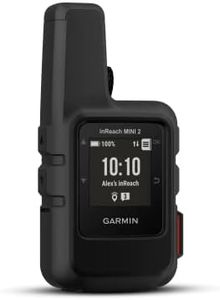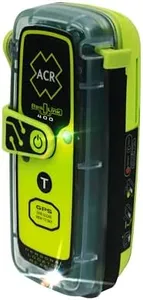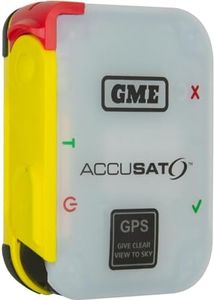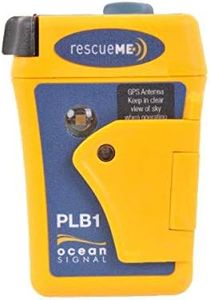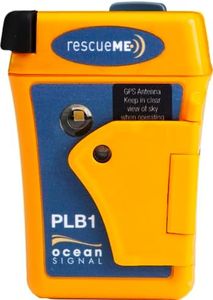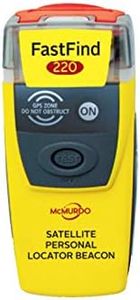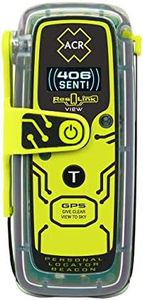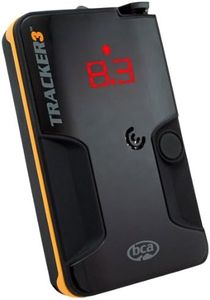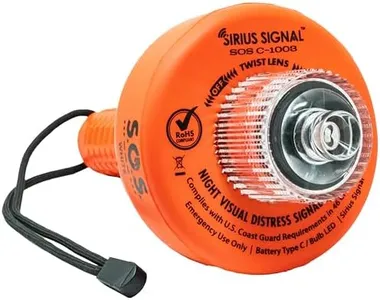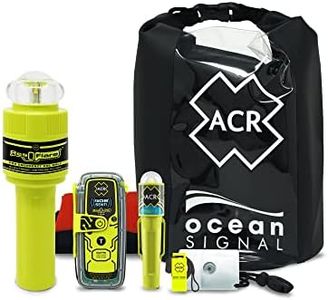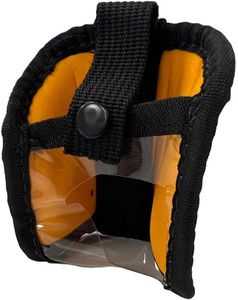We Use CookiesWe use cookies to enhance the security, performance,
functionality and for analytical and promotional activities. By continuing to browse this site you
are agreeing to our privacy policy
10 Best Emergency Locator Beacons
From leading brands and best sellers available on the web.Buying Guide for the Best Emergency Locator Beacons
Choosing an emergency locator beacon is all about ensuring you have a reliable way to signal for help if you find yourself in trouble, especially in remote areas with no cellular coverage. Since you may rely on this device for your safety (or even survival), it's important to pick one that fits your activities and the environments you expect to encounter. Learning about the key features and understanding your needs will help you select a beacon that gives you peace of mind and the right level of support in an emergency.Beacon TypeEmergency locator beacons come in a few main types: Personal Locator Beacons (PLBs), Satellite Messengers, and Emergency Position-Indicating Radio Beacons (EPIRBs). PLBs are compact and great for hikers and adventurers on land, while EPIRBs are generally larger and used on boats. Satellite messengers can also send basic messages. Identifying where and how you’ll use your beacon (land vs water, adventure travel, daily hiking) determines which type is best for you.
Transmission NetworkThis spec tells you how your beacon sends out a distress signal. Some use government-monitored international distress frequencies to contact search and rescue agencies directly (these are generally more reliable in emergencies), while others use commercial satellite networks that may also support extra functions like text messaging. If you need only emergency rescue, a beacon transmitting on government frequencies is solid. If you want two-way texting or location tracking, satellite-based messengers are the way to go.
Battery LifeBattery life in a beacon indicates how long the device can transmit after being activated. This ranges from a couple of days up to several days or even weeks, depending on the device. If you're going on short weekend hikes, standard battery life may be sufficient, but for longer trips where rescue might take days, aim for a beacon with a longer-lasting battery. Make sure to check if the battery is user-replaceable and remember to test or replace them as recommended.
Waterproof and DurabilitySince beacons are often used in harsh conditions—think rainstorms, rivers, or even accidental drops—it's crucial they are waterproof and rugged. Waterproof ratings range from simple splash resistance to the ability to withstand being submerged for hours. If you’re boating, kayaking, or spending lots of time in wet or unpredictable environments, choose the highest waterproof rating you can get. For more casual hiking, basic water resistance might suffice.
Ease of ActivationIn an emergency, you'll want a beacon that’s straightforward and quick to activate—sometimes even when you're injured or under stress. Some require flipping a switch, others might need you to open a protective cap first. The simpler the activation process, the better, especially if you might need to use it with cold or wet hands. Think about your likely scenarios and pick a beacon that matches your comfort level with its controls.
Location AccuracyThis refers to how precisely the beacon can report your GPS location. Some provide accuracy within a few meters, while others might be less exact. The more accurate the beacon, the easier it is for rescuers to find you quickly. If you’re planning to travel in dense forests, mountains, or remote places, prioritizing higher GPS accuracy is a good idea.
Extra FeaturesSome beacons offer additional features like two-way messaging, location tracking you can share with friends, or basic weather updates. These extras can be helpful if you want more communication options or to let others follow your progress, but they may add complexity. Decide whether these features are important for your style of adventuring or if you prefer a simple, focused emergency-only device.
